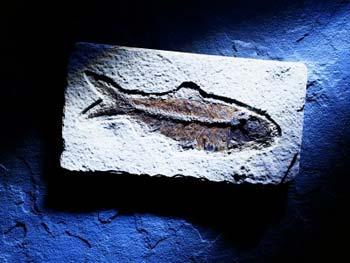Source: Xinhua
03-26-2009 11:38
Special Report: Tech MaxBEIJING, March 26 (Xinhua) -- Chinese scientists' discovery of an intact and ancient fish fossil might bring the search for modern vertebrate origins out of the Devonian age (416 to 359 million years ago) and into the preceding period.
 |
| Fish Fossil(File photo) |
In early May 2008, Zhu Min, a scientist with the Institute of Vertebrate Paleontology and Pale anthropology (IVPP) at the Chinese Academy of Sciences, along with his research team, found a bony fish fossil, which represents the oldest complete gnathostome, or jawed vertebrate, ever found in the world in Qujin, southwest China's Yunnan Province. The fossil was preserved in 418-million-year-old limestone.
Zhu and his team published an article about the finding in the British journal, Nature, on Thursday.
The fossil, which Zhu nicknamed "Dreamlike Ghost fish", or Guiyu oneiros, shows the skeletal anatomy of a small sarcopterygian, around 33 centimeters long.
It offers insights into the origin and early divergence of osteichthyes (bony fish plus tetrapods), as it exhibits a mosaic of gnathostome characters and fills in the morphological gap between osteichthyans and non-osteichthyan groups, Zhu said.
"Crucially, this piscine offshoot of our own distant past is both unusually intact and exceptionally old," Michael I. Coates from the Department of Organismal Biology and Anatomy at the University of Chicago wrote in a commentary accompanying Zhu's article in Nature.
The early split of the jawed vertebrate and the origins of bony fish play very important roles in the evolutionary history of vertebrates.
"By pushing a whole series of branching points in gnathostome evolution out of the Devonian and into the Silurian, the discovery of Guiyu also signals that a significant part of early vertebrate evolution is unknown," Coates said.
